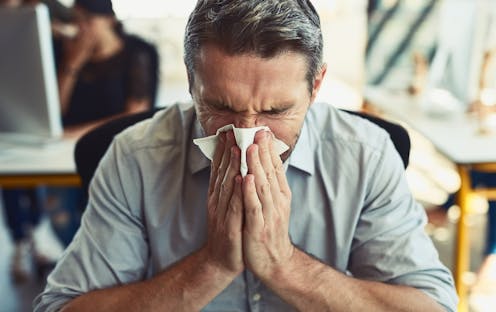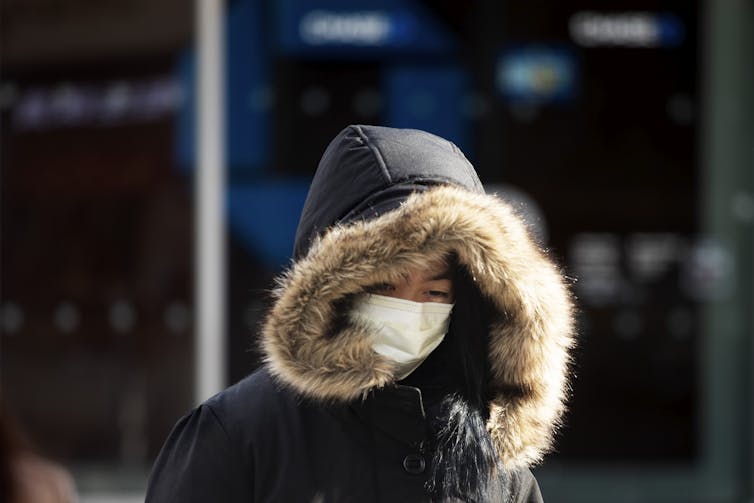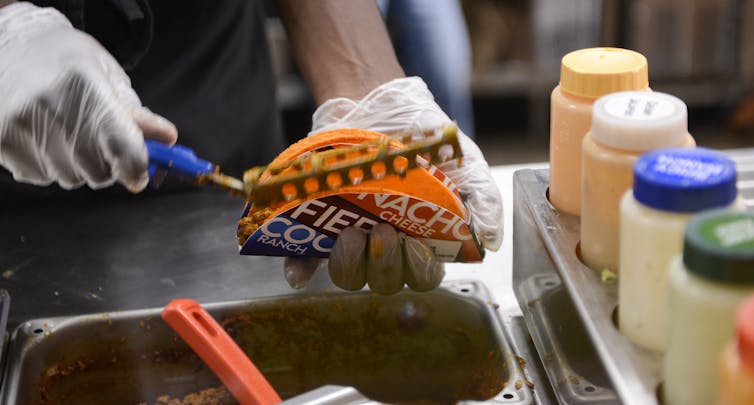US workplaces are nowhere near ready to contain a coronavirus outbreak
Americans tend to work even when they're sick, in part because of a lack of paid sick leave.

The new coronavirus has spread rapidly around the globe since its discovery late last year in China. It has now infected more than 19,700 people worldwide and killed at least 425, prompting travel bans, citywide quarantines and mass hysteria.
To combat its spread in the United States, the Centers for Disease Control and Prevention has offered some seemingly straightforward advice: “Stay home when you are sick.”
That’s easier said than done for the tens of millions of workers in the United States who don’t have paid sick days or who operate in a “tough-it-out” workplace culture. This gap is a big problem when a disease like the coronavirus can be spread with as little as a cough.
As someone who researches work, I’ve been wondering: Do these workplace norms and policies help our companies cope with a contagious virus – or do they accelerate its spread?

Working while sick
The U.S. is one of only two OECD countries that do not universally guarantee paid leave for sick workers. And 39 states leave it up to employers, meaning that approximately 1 in 3 workers in the U.S. have zero paid sick days.
Sure, there is the federal Family and Medical Leave Act, which offers job protections for taking time for certain health reasons. Yet these protections only cover a subset of employees, with stipulations around job tenure and employer size. Importantly, the act does not cover illnesses such as the flu – even in a pandemic – unless complications arise.
These conditions create a near-guarantee that workers will defy public health warnings and trudge into their workplaces, regardless of symptoms. In this way, a manageable health crisis can spiral into a pandemic.
We saw this happen during the last outbreak of H1N1 swine flu in 2009. One estimate found that at least 3 in 10 workers in the private sector did not take time off from work when sick with the virus, which led to up to 7 million additional infections and may have extended the outbreak.
The CDC blames H1N1 and related complications for 12,469 deaths in the United States in 2009 and 2010.
On the front lines
It’s particularly concerning that those who are more likely to go into work when sick are service workers, since their jobs are usually impossible to do from home.
Fewer than half of service workers have any paid sick days, and the proportion declines with pay.
These are the people who prepare food in restaurants, take care of the young, sick and elderly, and keep workplaces clean. Many also play a vital role in maintaining public health as the first line of defense against contagion. Yet that role is undermined by their lack of access to policies that allow and encourage them to stay home when they are sick.
Norovirus, for example, is the leading cause of food poisoning in the United States, infecting at least 20 million Americans a year. And yet, the CDC has found that 1 in 5 food service workers say they work “while sick with vomiting or diarrhea,” in direct contradiction of guidelines.
This disturbing statistic should be enough to prompt consumers to ask about paid sick leave policies at their favorite restaurants – and for employers in the food industry to review their paid sick leave policies and workplace culture around taking time for recovery.

Closing the gap in America’s defenses
Fortunately, more states, localities and companies are working to close the gap in America’s defenses.
Today, 11 states and a handful of localities guarantee paid sick leave for workers.
A number of companies have also recognized the potential dangers of having sick workers on the job. Recently, Taco Bell announced it will provide paid sick leave for workers, following similar policies from employers like Chipotle and Walmart. It remains to be seen if others will follow, and how employers will instill a work culture that supports wellness.
Offering paid sick days is not just good for public health – research shows it also makes good business sense.
For example, the National Partnership for Women and Families estimates that so-called “presenteeism,” when sick employees show up to work, costs employers $218 billion per year– more than the cost of absenteeism due to illness.
The Center for Law and Social Policy conducted a survey that found that companies that provided employees with paid sick leave reported higher levels of productivity and lower turnover. And a study of the impact of Connecticut’s 2011 paid sick leave law found employers reported little or no increase in costs as a result.
Changing the culture
But a lack of paid sick leave is only part of the problem. America’s unhealthy work culture is also at fault.
A 2018 survey found that nearly half of workers with paid sick days did not use a single one in the previous year. While that could be an indicator of healthy employees, that seems very doubtful; other surveys suggest many of them went to work sick.
This cultural attitude not only risks workers’ own health but also that of their colleagues, customers and broader community. It is concerning in the best of times, but considering the possibility of a pandemic, the potential implications are downright scary.
[ Like what you’ve read? Want more? Sign up for The Conversation’s daily newsletter. ]
Karen Scott served as a policy advisor on President Obama's White House National Economic Council from 2014 to 2017.
Read These Next
From truce in the trenches to cocktails at the consulate: How Christmas diplomacy seeks to exploit s
World leaders like to talk up peace at Christmastime. But alongside the tales of seasonal breaks in…
As DOJ begins to release Epstein files, his many victims deserve more attention than the powerful me
Powerful men connected to Jeffrey Epstein are named, dissected and speculated about. The survivors,…
The world risks forgetting one of humanity’s greatest triumphs as polio nears global eradication − 7
Polio may finally be defeated in the next 5 years. Will the world recognize what an extraordinary achievement…





